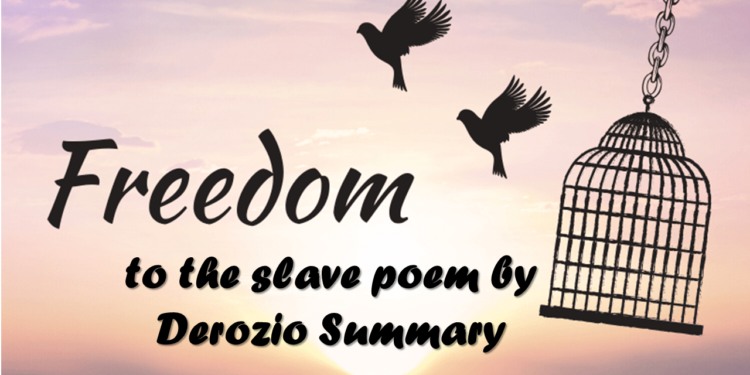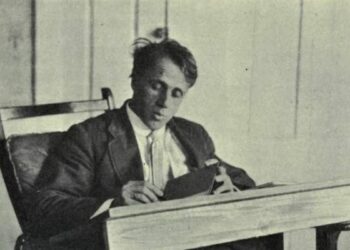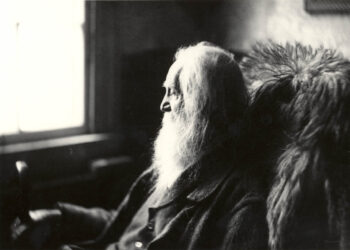Freedom to the slave poem by Derozio Summary
Analysis of Freedom to the Slave by H. L. V. Derozio, Top Summary and Critical Analysis of the poem Freedom, Freedom to the slave summary line by line, freedom to the slave summary and analysis,What is the summary of the slave?,
A passionate and powerful poetry that cries out against the chains of injustice and makes an earnest request for freedom. Written at a time when the institution of slavery was a persistent blot on human history, Derozio, a pivotal character in the Bengal Renaissance, takes a passionate stand on the issue. He not only denounces the dehumanizing effects of slavery in this poem, but he also imagines an India freed from slavery.
Also Read-
Freedom to the slave poem by Derozio Summary-The poems, which are full of striking imagery and expressive language, weave a compelling story that goes beyond the historical setting and is resonant with themes of justice, resistance, and the never-ending quest for freedom. This discourse explores the subtleties of Derozio’s poetic skill and the richness of meaning that characterizes “Freedom to the Slave.”
Freedom to the slave poem Summary
1. Line 1-2:
- “Clank your chains and tread ye slaves!”
- The poem begins with an imperative command, urging the slaves to make noise by clanking their chains and to move forward.
2. Line 3-4:
- “Wear yet the fetters gall your souls?”
- The poet questions whether the slaves are still willing to endure the pain and discomfort caused by their chains.
3. Line 5-8:
- “O, Christ! How long the tyrants’ boot / shall grind the loadsman’s neck, and low / the dust, aye, low as misery?”
- Here, Derozio invokes Christ and laments how long the tyrants’ oppression will persist, keeping the loadsman (slave) subservient, with his neck bowed low, just like the dust of misery.
4. Line 9-12:
- “See them crushed in soul and body, / see them cursed from sire to son. / Hell is dark and earth is cloudy, / is it not, thou Holy One!”
- The poet describes the slaves as being crushed in both spirit and body, cursed across generations. The reference to Hell and the plea to the “Holy One” suggest a questioning of the divine in the face of such suffering.
5. Line 13-16:
- “Are they men who smile and speak / courteous lessons, calmly seek / our poor land to overrun, / and in vile pollution reek?”
- Derozio questions whether those who smile and speak courteously, yet seek to overrun the land and bring pollution, can be considered true men.
6. Line 17-20:
- “Lo! their crafty and cold eyes, / flash with lust of power and gold. / To the bliss of thy sweet skies, / India, shall they ne’er behold.”
- The poet criticizes the cold and crafty nature of those with a lust for power and wealth, asserting that they will never experience the bliss of India’s skies.
7. Line 21-24:
- “To our shores like demons they / from their Hell shall cross the main. / Who his country sells, they say, / stamps the leprosy on his brain.”
- Derozio likens those who come to India with ill intentions to demons from Hell. He condemns those who betray their own country, suggesting that it marks them with a metaphorical leprosy on the mind.
8. Line 25-28:
- “Monster, – slaves we are no longer! / Freemen, brith we are forever! / Thunders rend the skies asunder, / flames disgrace the darkened river!”
- The tone shifts dramatically as the poet declares the transformation of the slaves into freemen. The imagery of thunder and flames suggests a rebellion or uprising against the oppressive forces.
9. Line 29-32:
- “India free, oh, happy nation! / Spread thyself like Ocean wide; / Rise, gigantic, raise thy station; / And remember all that died.”
- Derozio envisions a liberated and happy India, encouraging the nation to rise and expand like the ocean. There’s a call to remember the sacrifices of those who died in the struggle for freedom.
10. Line 33-36:
- “Freedom to the Slave, and ever / glory to the warrior band! / Freedom! freedom! – never, never / slaves in brotherhood shall stand!”
- The poet concludes by reiterating the call for freedom to the slave and praising the warrior band. The repetition of “Freedom” emphasizes its significance, and the assertion that slaves shall never stand together implies a rejection of any future subjugation or oppression.
Freedom to the slave poem
A slave he ceased to be;
How proudly beat his heart, when first
He knew that he was free !—-
The noblest feelings of the soul
To glow at once began;
He knelt no more; his thoughts were raised;
He felt himself a man.
He looked above—-the breath of heaven
Around him freshly blew;
He smiled exultingly to see
The wild birds as they flew,
He looked upon the running stream
That ‘neath him rolled away;
Then thought on winds, and birds, and floods,
And cried, ‘I’m free as they!’
Oh Freedom! there is something dear
E’en in thy very name,
That lights the altar of the soul
With everlasting flame.
Success attend the patriot sword,
That is unsheathed for thee!
And glory to the breast that bleeds,
Bleeds nobly to be free!
Blest be the generous hand that breaks
The chain a tyrant gave,
And, feeling for degraded man,
Gives freedom to the slave.
Conclusion:
Henry Louis Vivian Derozio’s poem “Freedom to the Slave” is a passionate and impactful exploration of the theme of slavery and the yearning for freedom. Through vivid imagery, rhetorical questions, and a fervent call for liberation, Derozio condemns the oppression of slaves and envisions a free and glorious India.
Freedom to the slave poem by Derozio Summary-The poem’s dramatic shift in tone from the description of slavery to the declaration of freedom, coupled with its emotive language, creates a compelling piece that resonates with themes of justice, resistance, and the collective striving for liberty.Analysis of Freedom to the Slave by H. L. V. Derozio, Top Summary and Critical Analysis of the poem Freedom, Freedom to the slave summary line by line, freedom to the slave summary and analysis,What is the summary of the slave?,
FAQ.
1. What is the central theme of “Freedom to the Slave” by Derozio?
The central theme of the poem is the condemnation of slavery and the passionate call for freedom. Derozio expresses a fervent desire for the emancipation of slaves and envisions a liberated and glorious India.
2. How does Derozio use imagery in the poem?
Derozio employs vivid imagery to convey the suffering of slaves and the aspirations for freedom. Images of chains, the loadsman’s bowed neck, and the dust of misery vividly portray the oppression, while thunder, flames, and the expansive ocean symbolize the uprising and the desired liberation.
3. What is the significance of the references to Christ and the Holy One in the poem?
The references to Christ and the Holy One serve to add a religious and moral dimension to the poem. Derozio invokes these figures to question the morality of the oppressors and to express a sense of despair in the face of continued tyranny.
4. Why does Derozio use the term “demon” in the poem?
Derozio uses the term “demon” to characterize those who seek to overrun India with their lust for power and gold. It conveys a strong sense of moral condemnation, portraying the oppressors as malevolent forces with destructive intentions.
5. How does the poem express a sense of national pride and hope for India’s future?
The poem expresses national pride by envisioning a free and happy India that rises like the ocean. Derozio calls for the remembrance of sacrifices and encourages the nation to raise its station, reflecting a hopeful outlook for India’s future as a liberated and glorious nation.

















